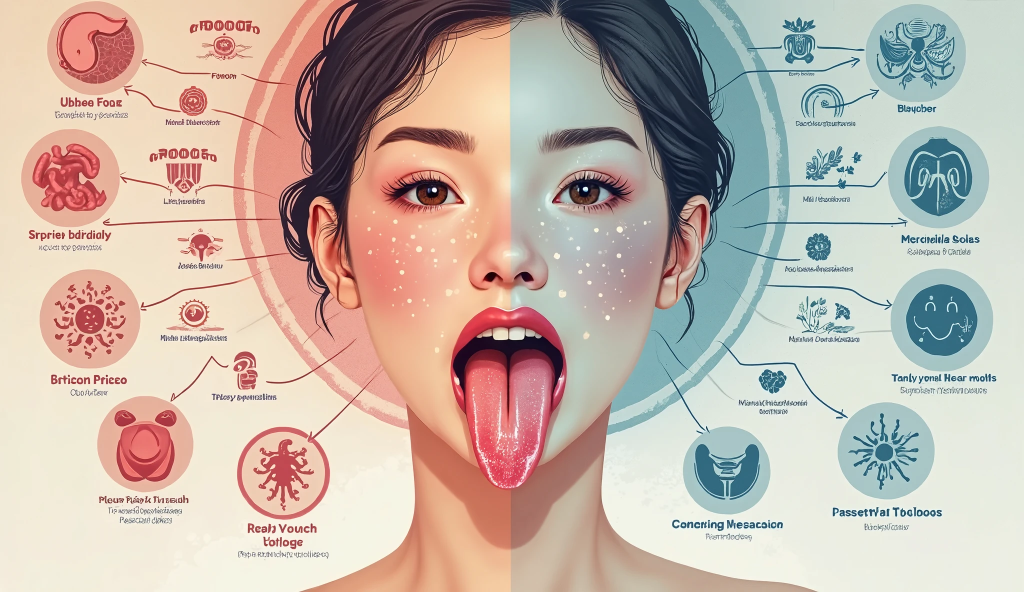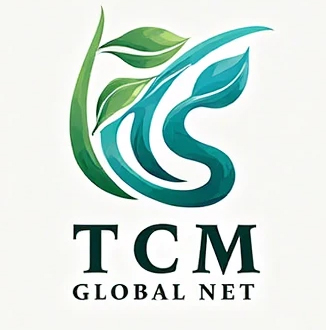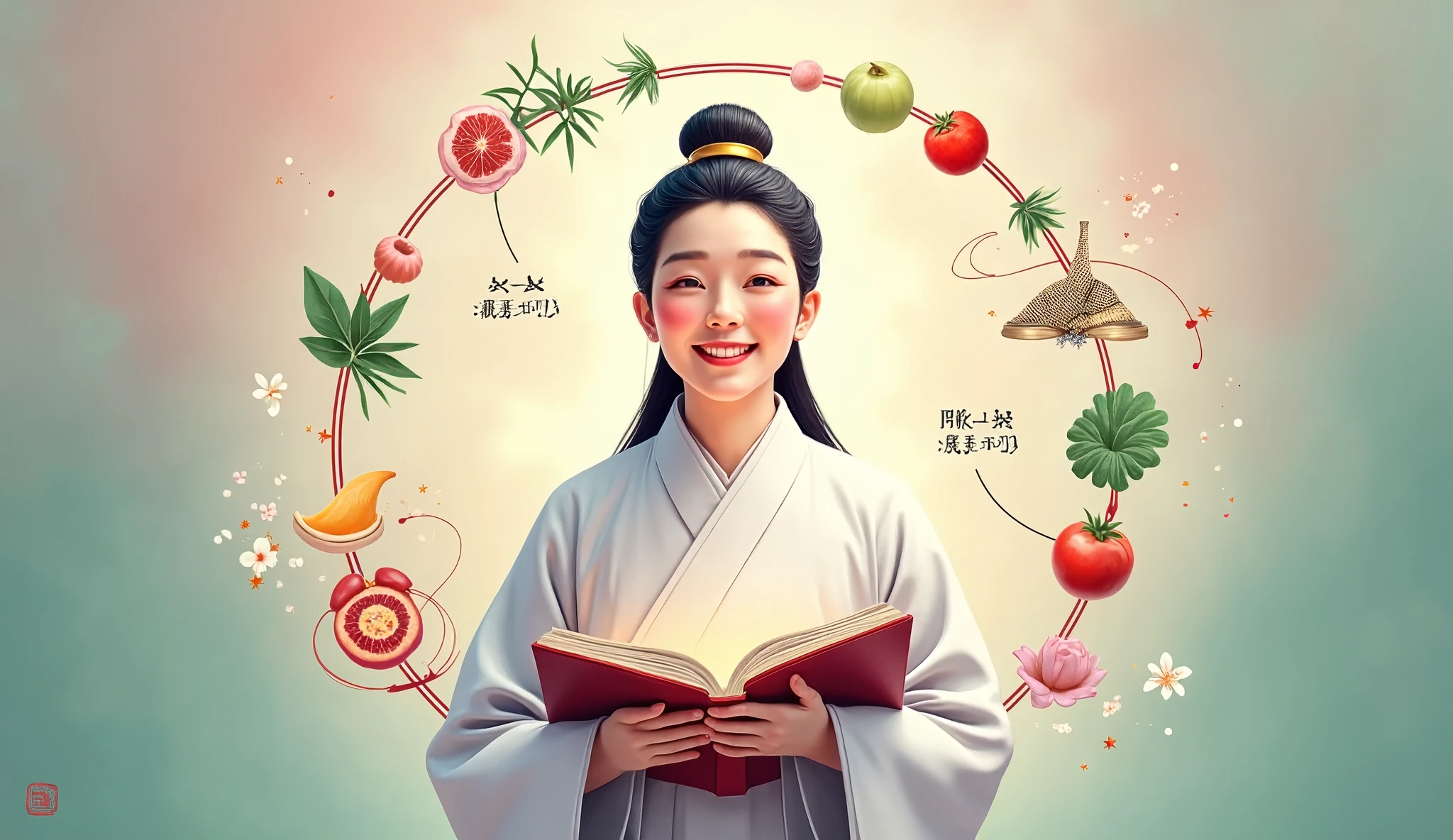I. Vision Problems and Physical Conditioning: The Importance of a Holistic Approach
In traditional Chinese medicine theory, vision problems are not merely local issues of the eyes but are closely related to the overall circulation of qi and blood, as well as the functions of the internal organs. Specifically, the functions of the spleen and stomach, the occipital region, the upper and lower eye sockets, and the smooth flow of the Ren and Du meridians all have a profound impact on vision.
1. Spleen and Stomach: The Source of Qi and Blood
The spleen and stomach are the foundation of acquired constitution and the source of qi and blood. Normal function of the spleen and stomach is essential for transforming food into nutrients and distributing them throughout the body, including the eyes. Therefore, the first step in managing vision is to ensure the health of the spleen and stomach, ensuring an adequate supply of qi and blood to nourish the eyes.
2. Occipital Region: Essence Ascending to the Eyes
Traditional Chinese medicine believes that the essence of the five viscera and six bowels ascends to the eyes, and “the meridians converge and connect to the brain, emerging from the neck.” Therefore, the smooth flow of meridians in the occipital region directly affects the blood supply to the eyes. Adjusting the occipital region can promote blood circulation to the eyes and improve vision.
3. Upper and Lower Eye Sockets: Channels for Qi and Blood Circulation
The upper and lower eye sockets are channels for the input of the stomach system. Clearing these channels can promote the rhythmic flow of the eye meridians, drive the circulation of yang qi and the qi and blood of the five viscera, thereby improving blood supply and nutrition to the eyes.
4. Ren and Du Meridians: The Governors of Yin and Yang Qi and Blood
The Ren and Du meridians govern the yin and yang qi and blood of the body, overseeing the entire meridian system. Clearing the Ren and Du meridians, especially the Du meridian, can promote overall blood circulation and provide sufficient qi and blood support to the eyes.
5. Advantages of Vision Adjustment in Adolescents
For adolescents under 16 years old, their bodies and eye structures are in the developmental stage, with more active visceral functions and relatively smooth meridian and blood flow. At this time, if proper techniques are used for adjustment, significant results can often be achieved within three to six months, with noticeable improvements in both constitution and vision.
II. Tongue Diagnosis: A Key Step in Vision Adjustment
In the process of vision adjustment, differentiation is a crucial step, and tongue diagnosis is the core method of differentiation. By observing the tongue, one can understand the changes in the body’s qi and blood, visceral functions, and the balance of yin and yang, thereby formulating a more precise adjustment plan.

1. The Concept of the Three Jiao: The Foundation of Understanding Tongue Diagnosis
To learn tongue diagnosis, one must first grasp the concept of the “three jiao”: ☆☆ The Sanjiao Meridian: One of the twelve meridians of the body, it is distributed across the chest, abdomen, upper limbs, and head and face, governing the ascending, descending, entering, and exiting of the body’s qi. ☆☆ The Sanjiao Organ: One of the six fu organs, it encompasses the upper, middle, and lower parts of the body and is the channel for the circulation of the body’s qi, blood, and body fluids.
2. Correspondence Between the Three Jiao and Tongue Appearance
- Upper Jiao: Governs the dispersion of qi, corresponding to the head and chest. The tip of the tongue reflects the condition of the upper jiao.
- ☆☆ Red Tip of the Tongue: Indicates heat in the upper jiao, which may manifest as excessive heart fire, coughing, sore throat, or rhinitis. ☆☆ Swollen Tip of the Tongue: Indicates stagnation of qi in the upper jiao, which may manifest as dizziness, memory loss, etc.
- Middle Jiao: Pertains to the spleen and stomach, governing digestion and absorption. The middle of the tongue reflects the condition of the middle jiao.
- ☆☆ Swollen Middle of the Tongue: Indicates dysfunction of the spleen and stomach, which may manifest as indigestion, bloating, etc. ☆☆ Depressed Middle of the Tongue: Indicates weakness of the spleen and stomach, which may manifest as loss of appetite, fatigue, etc.
- Lower Jiao: Governs excretion, corresponding to the abdomen and lower limbs. The root of the tongue reflects the condition of the lower jiao.
- ☆☆ Swollen Root of the Tongue: Indicates stagnation of qi in the lower jiao, which may manifest as constipation, frequent urination, etc. ☆☆ White and Greasy Root of the Tongue: Indicates cold and dampness in the lower jiao, which may manifest as fear of cold, weakness in the waist and knees, etc.

3. Tongue Body and Tongue Coating: Important Bases for Differentiation
- Tongue Body: Refers to the muscle and vascular tissue of the tongue, reflecting the abundance or deficiency of the body’s qi and blood and the function of the viscera.
- ☆ Normal Tongue Body: Pale red, moist, and flexible. ☆ Red Tongue Body: Indicates internal heat, which may manifest as symptoms of inflammation. ☆ Pale White Tongue Body: Indicates deficiency of qi and blood, which may manifest as fatigue, dizziness, etc.
- Tongue Coating: Refers to the coating on the surface of the tongue, reflecting the function of the spleen and stomach and the metabolism of body fluids.
- ☆ Normal Tongue Coating: Thin, white, and moist. ☆ White and Greasy Coating: Indicates internal cold and dampness, which may manifest as indigestion, diarrhea, etc. ☆ Yellow and Greasy Coating: Indicates internal damp heat, which may manifest as a bitter taste, bad breath, constipation, etc.
III. Specific Applications of Tongue Diagnosis and Vision Adjustment
1. Key Points for Observing Tongue Appearance
- Time and Posture: ☆ Avoid observing the tongue immediately after waking up or eating; it is recommended to do so one hour after waking up or eating. ☆ When observing, naturally extend the tongue and use a phone camera to take a picture for a natural view of the tongue.
- Observation Content: ☆ Check if the tip of the tongue is red or swollen: to determine if there is heat or stagnation in the upper jiao. ☆ Check if the middle of the tongue is swollen: to determine if the spleen and stomach function is normal.
2. Tongue Appearance and Adjustment Methods
- Red or Swollen Tip of the Tongue: ☆ Focus on clearing the qi and blood of the upper jiao. ☆ Specific Techniques: Massage the cervical spine and relax the bladder meridian, spending three to five minutes on each area.
- Swollen Middle of the Tongue: ☆ Focus on adjusting the spleen and stomach. ☆ Specific Techniques: Massage the abdomen and apply moxibustion to the Zhongwan point.
- No Redness or Swelling at the Tip or Middle of the Tongue: ☆ Focus on directly adjusting the spleen and stomach. ☆ Specific Techniques: Massage the abdomen and apply moxibustion to the Zhongwan point.
- Opening the Four Gates: ☆ This can be done regardless of the presence of the above tongue issues. ☆ Specific Techniques: Use the towel-wringing technique and massage the muscles behind the ears on the limbs to promote overall qi and blood circulation.
3. Other Adjustment Considerations
- Back Clearing: ☆ Techniques such as massaging the cervical spine, relaxing the bladder meridian, and loosening the Huatuo Jiaji points can clear the qi and blood of the upper and middle jiao, improving vision. ☆ If done correctly, a noticeable improvement in tongue appearance and vision can be seen after one session.
- Pinching the Spine: ☆ Can address food stagnation, promote yang qi, and support the body’s resistance to pathogens, benefiting the adjustment of visceral functions and promoting growth and development. ☆ However, not all children are suitable for spine pinching; some may experience constipation or other discomforts afterward, requiring adjustments based on specific conditions.
- Special Constitutions: ☆ Some children may have special constitutions, such as not being able to stimulate certain acupoints on the heart meridian, and should be adjusted under the guidance of a professional doctor.
IV. Case Analysis: The Relationship Between Tongue Appearance and Vision Problems
Case One: ☆ Tongue Appearance: Red and swollen tip, depressed middle, and horizontally swollen root. ☆ Analysis: Heat and stagnation in the upper jiao, weak spleen and stomach, and stagnation in the lower jiao. ☆ Adjustment Suggestions: Focus on clearing the lower jiao, using the towel-wringing technique; adjust the spleen and stomach, avoiding moxibustion.

Case Two: ☆ Tongue Appearance: Slightly red but very swollen tip. ☆ Analysis: Severe stagnation of qi in the upper jiao, possibly related to emotional issues. ☆ Adjustment Suggestions: Focus on clearing the upper jiao, massaging the cervical spine and relaxing the bladder meridian; pay attention to emotional management.

Case Three: ☆ Tongue Appearance: Red tip, swollen middle, and white and greasy root. ☆ Analysis: Heat in the upper jiao, dysfunction of the spleen and stomach, and cold and dampness in the lower jiao. ☆ Adjustment Suggestions: Clear the upper jiao, adjust the spleen and stomach, avoiding moxibustion; consider dispelling dampness and warming yang.

Case Four: Some children have a missing part of the tongue coating at the tip, which is related to their constitution. Among the children I have treated, a clear missing tip indicates heart qi deficiency, and a depressed middle also indicates deficiency. Some tongues are crooked in the middle, which is related to scoliosis. This can lead to difficulty concentrating and may be associated with scoliosis, resulting in uneven height and leg length. If a child has scoliosis and vision problems, combining muscle training may yield better results. If the middle of the tongue is swollen, muscle group training should also be combined.

V. Conclusion
Tongue diagnosis is an important method for adjusting vision in traditional Chinese medicine. By observing the tongue, one can understand the changes in the body’s qi and blood, visceral functions, and the balance of yin and yang, thereby formulating a more precise adjustment plan. Mastering the skills of tongue diagnosis and combining them with correct adjustment techniques can effectively improve vision problems and promote overall health.


Leave a Reply